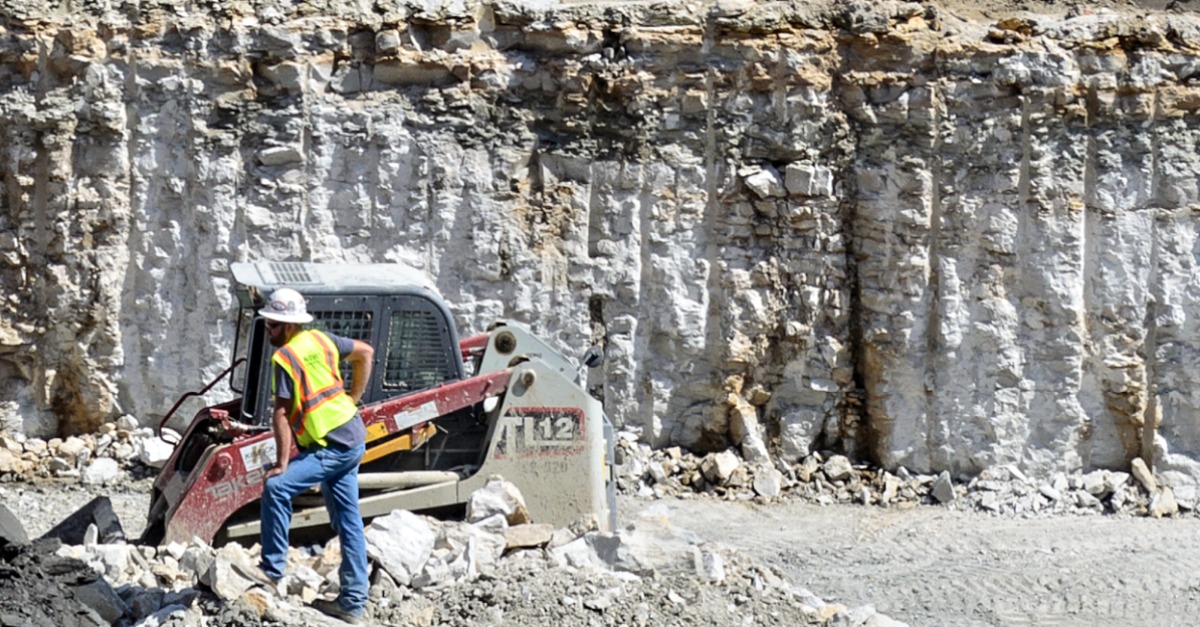Excitement is building as the revitalization movement sweeping downtown Kansas City spreads south and east. Developers are looking to follow the success of the KC Streetcar into new opportunities in the Crossroads and surrounding areas. But before ideas turn into construction plans, an unusual subgrade must be carefully investigated and managed. We continue our blog series on the KC Crossroads subgrade with a closer look at three natural complications that can sting a construction effort without the right geotechnical expertise.
1. The Bedrock May Surprise You
In the valley that slopes between the limestone bluffs along I-670 and Union Hill to the south, different areas of the Crossroads reveal different bedrock stories. Unlike more predictable farmland further out in the Kansas and Missouri countryside, bedrock levels here are anything but consistent. Millions of years of turbulent natural forces carved deep pockets leaving behind bedrock at widely varying depths.
As glaciers melted and froze up again, the result was water pressure in many forms that cut unusual paths and positioned bedrock both near the surface and way down deep. Rising and falling levels of ancient seas across our region, plus the relentless power of the Kansas and Missouri Rivers and the new creeks they forged, left bedrock as shallow as a few feet. But just a short distance away you may have to drill hundreds of feet down to find it.
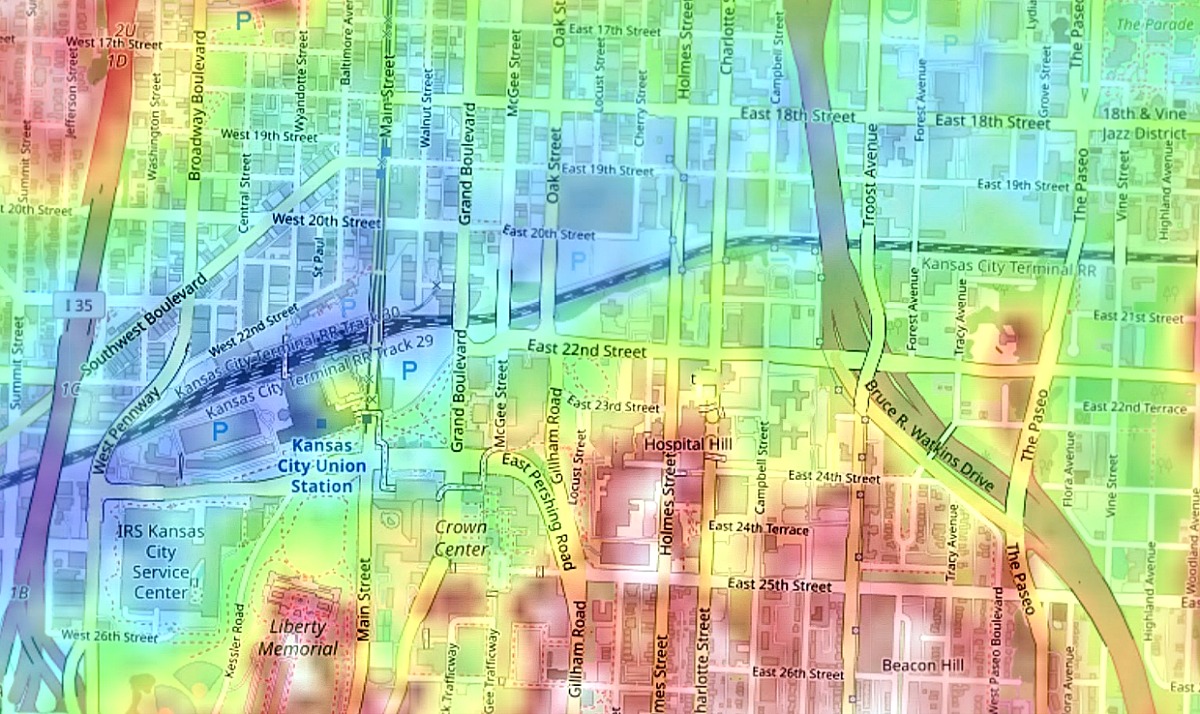
A simple topographic map shows how land elevations can vary nearly 200 feet across short distances. Red and white-shaded areas, including Liberty Memorial, approach 1,000 feet while nearby blue-shaded areas including Union Station and the Freight House swoop as low as 771 feet.
If you’re building a structure from the ground up in the Crossroads, piering may need to go down much deeper than you’ve ever encountered. In fact, the bedrock may be so deep that it’s not feasible for your project. This is when our geotechnical team must get creative and develop an alternative.
We might choose to bypass traditional piers to formulate a support platform that’s more wide than deep. Engineer-controlled fill wrapped in geogrid can effectively absorb and distribute the weight of a structure without the need for piering. The so-called ‘snowshoe’ approach works like a charm in the right hands as AOG has demonstrated many times on projects in industrial brownfields where low-quality ground material is also a challenge. Geopiers consisting of pressurized rock that improve the quality and stability of the soil are another alternative we may explore.

A sample of the geogrid that’s wrapped around engineer-controlled fill to create ‘snow-shoe’ support.
Shallow bedrock can bring its own challenges. Drainage must flow below your foundation so if bedrock is near the surface, you could be forced into expensive measures to create an opening for utility lines. Shallow bedrock can be a deal-breaker for many construction projects, including something as simple as the placement of a utility pole.
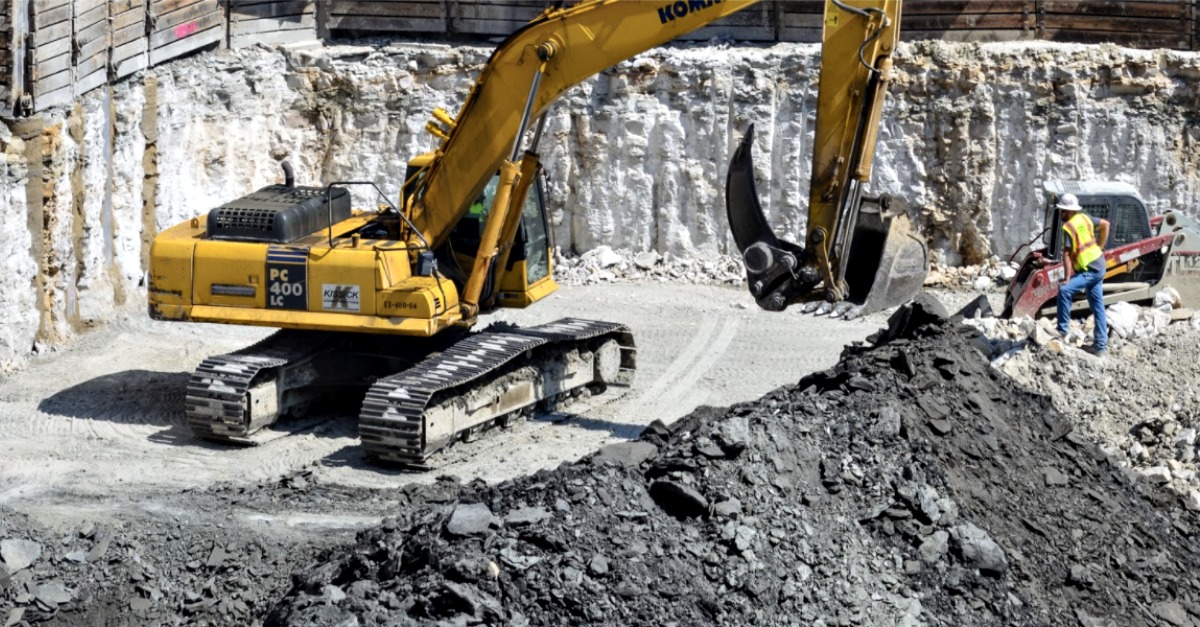
Kissick Construction tackling the tough job of ripping through shallow bedrock layers on a project further south near the Plaza.
2. Ground Material is Unpredictable
Clay, glacial melt materials, unknown fill — the type and quality of unconsolidated ground material on top of bedrock in the area can also vary widely and puts even greater value on the judgment of our geotechnical engineers. Deep soil on top of low bedrock can be especially difficult to assess, with different characteristics revealed at different depths.
Meticulous investigation and testing must be conducted to identify the exact nature of the material at a specific location. Strength and resistance to change must be pinpointed to accurately calculate the long-term viability of a structure’s support. We’ve worked in the Crossroads area before and know what to look for. We also know exactly what to expect from what we find.

Compaction testing is just one of many precise calculations critical to assessing soil quality at specific locations in the Crossroads area.
We also give careful consideration to the anticipated impact of changing seasons with a particular focus on the influence of dry and wet weather. The soil’s capacity to shrink and swell as conditions change is critical when evaluating foundation options and the overall potential of a construction project at a specific site. You don’t have to be an engineer to know weather conditions can change suddenly and dramatically in our part of the country. It’s an important factor in the assessment of subgrade conditions at any location in Kansas City’s core.
3. Water is a Wild Card
The OK Creek diversion tunnel, a central component of the city’s sewer system, runs right through the heart of the Crossroads. OK Creek once flowed completely on the surface, much like other local creeks. It easily spilled out of its banks after hard rains and made a mess of the area through the early 1900s before it was straightened, wrapped in concrete, and buried to make way for the construction of Union Station.
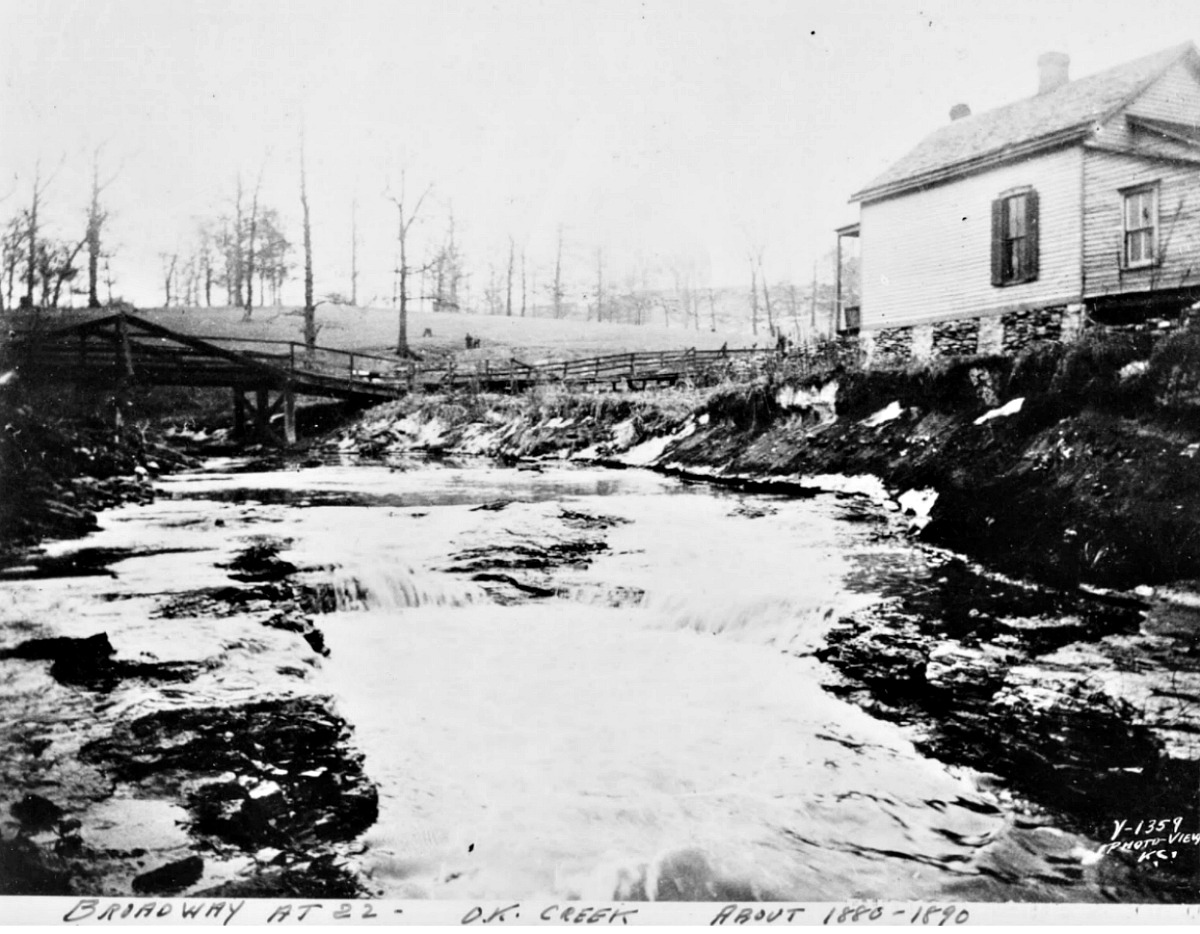
OK Creek had become a dirty mess in the Crossroads area before it was covered and buried as part of sewer system development just before Union Station construction. 1885 Photo courtesy: Missouri Valley Special Collections, Kansas City Public Library, Kansas City, Missouri.
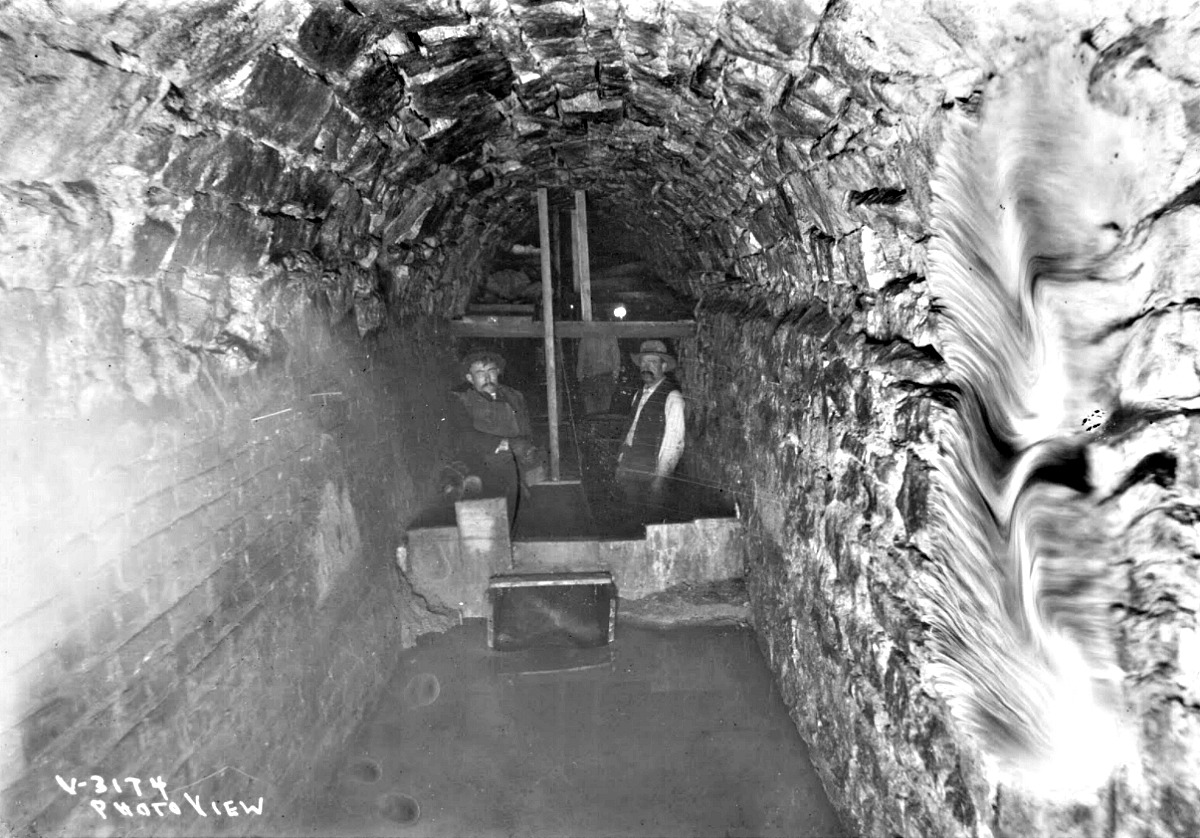
Underground construction of sewer at OK Creek and Main Street around 1910. Courtesy: Missouri Valley Special Collections, Kansas City Public Library, Kansas City, Missouri.
The bedrock is so low along OK Creek that burying it far below Union Station was feasible even in those days. Crews cut through 100 feet of unconsolidated material to reposition the tunnel and keep it flowing with gravity toward the river. While the diversion tunnel curbed flooding and boosted ground stability in the area, varying groundwater levels are still an unpredictable challenge in all the fill material used to cover the tunnel and support the construction of the train station.
Even rock layers can be a water wild card in the Crossroads area. Cyclical deposition of shale and limestone over millions of years locked in sandstone, coal, and other permeable materials that can trap groundwater. Construction crews have repeatedly dug into watery, time-consuming surprises caused by natural pooling along with horizontal rock deposits or even leaky water pipes. Geotechnical experts can detect the presence of water at a project site and help plan for it before builders find out the hard way.
Water issues extend to storm runoff. Most of the area is covered in concrete, asphalt, and other solid materials leaving few areas for rain to naturally soak in. Builders will want a crystal clear understanding of how runoff impacts the soil, how it will be handled on the property, and how adjacent properties will influence the plan. Overlooking details can risk saturation that compromises the stability of structural support.
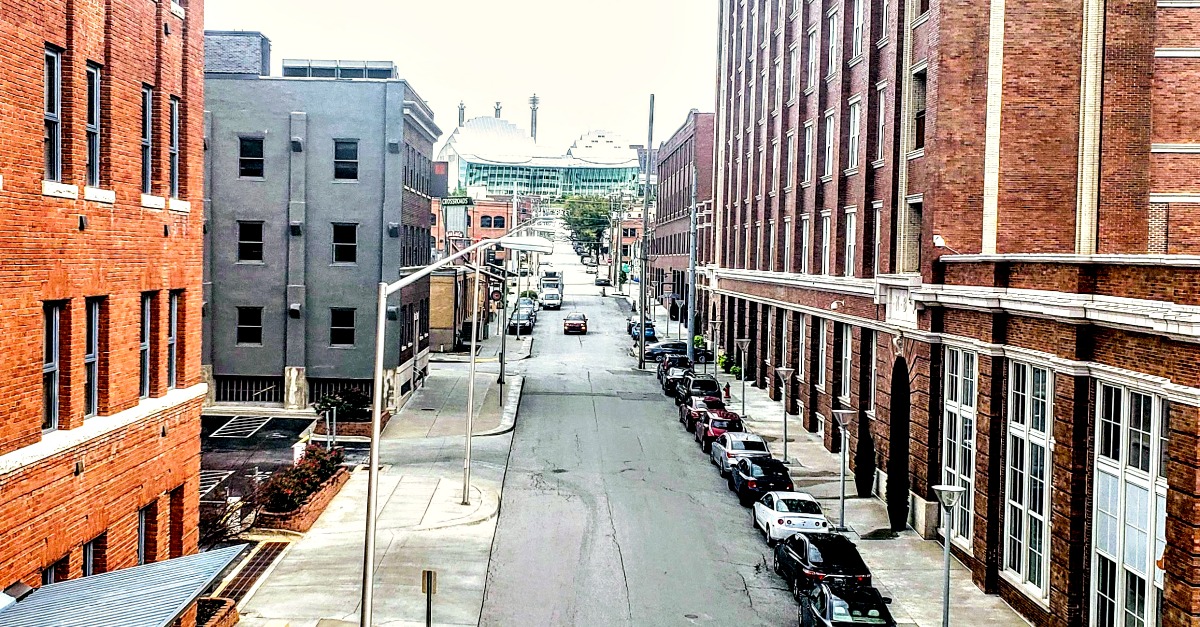
Investigation Unlocks a Smart Plan
It’s easy to focus on beautiful architectural designs and grand visions of new buildings in the Crossroads. But underestimating the significance of the subgrade where each project begins can be a devastating mistake. For buildings to rise above the ground, they must first get out of the ground with the kind of confidence that’s not easy to come by if you’re looking for shortcuts. Geotechnical service is important in all construction plans and it’s especially critical in Kansas City’s core.
Alpha-Omega Geotech has deep knowledge of subgrade conditions in downtown Kansas City and the Crossroads area. We can tell you with complete certainty that a thorough investigation and assessment of the subgrade at a building site is the only way to eliminate serious stability risks. We’ve seen the results when it’s done right, and we’ve also seen the damage when it’s ignored.
Our team of veteran engineers understands the challenges posed by varying bedrock levels, unknown soil properties, perched water tables, and the influence of changing natural conditions, and we know builders are counting on our judgment to tackle these challenges successfully.
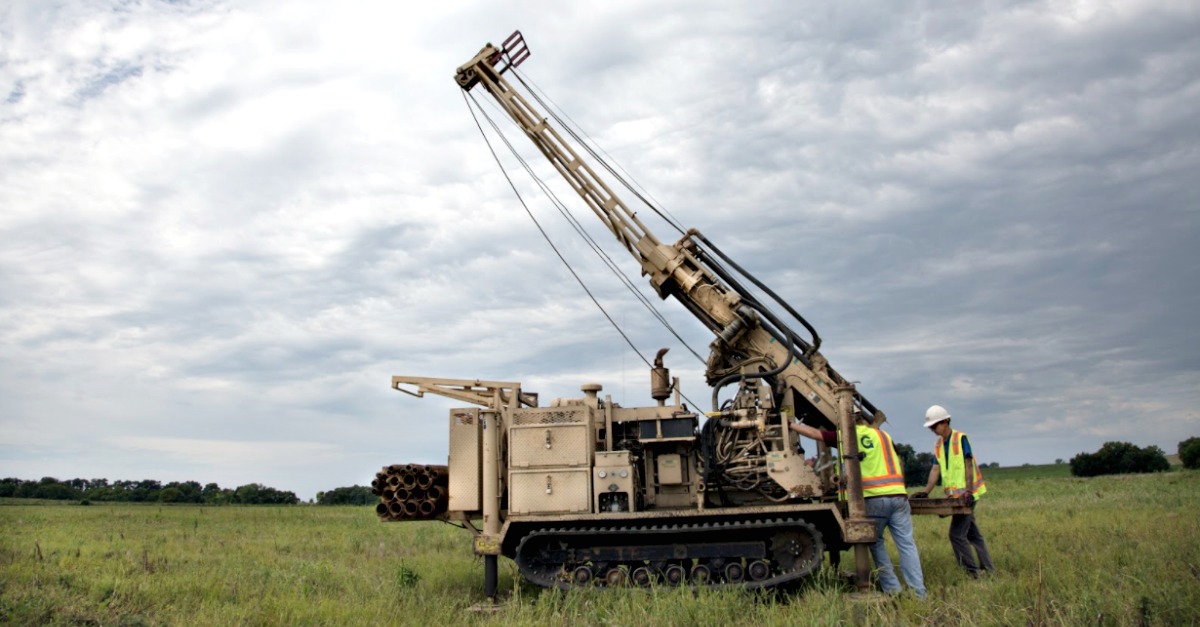
AOG specializes in digging into the unknown with geotechnical engineering services local construction teams depend on.
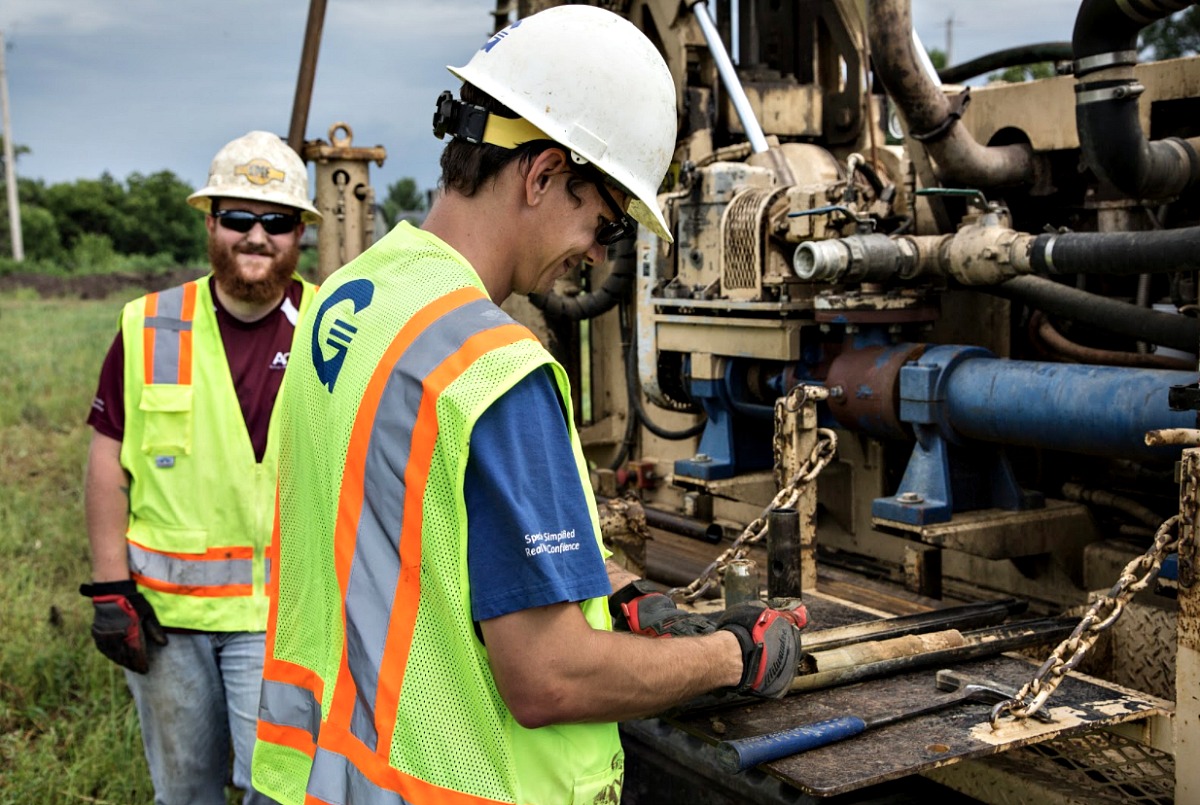
AOG crews dig into the unknown.
Building from the ground up in the heart of Kansas City is an exciting prospect and we can’t wait to dig into more work for the community we love. #CreativeEpicenter #KCHeartland
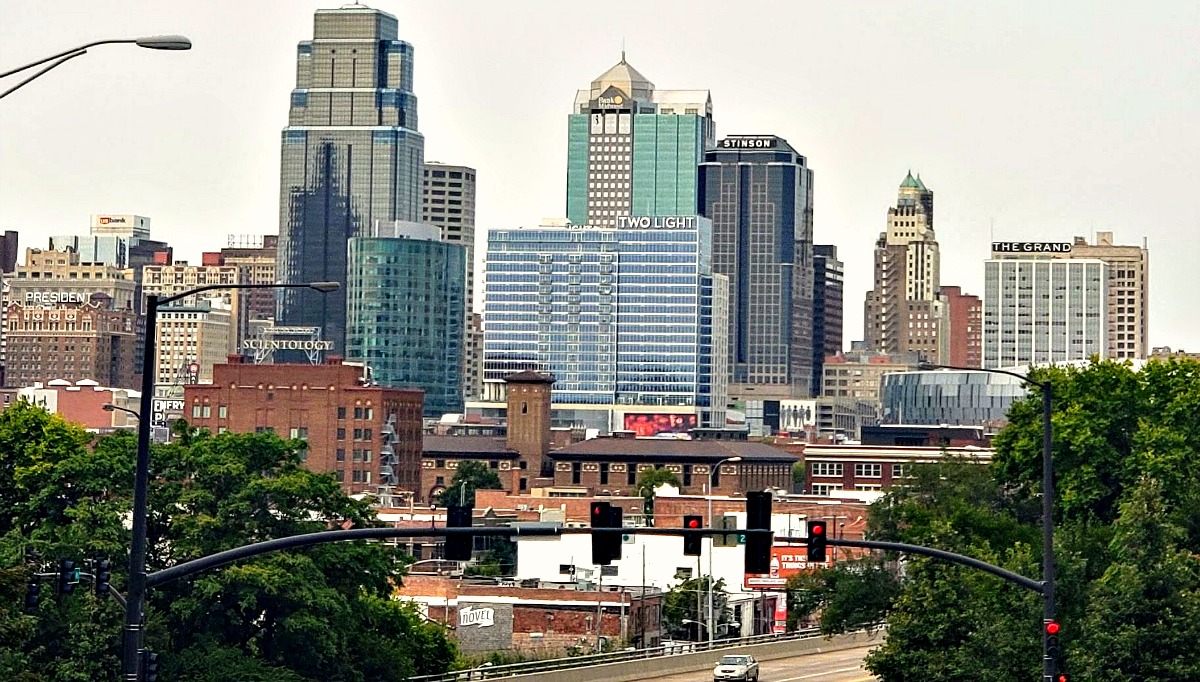
Special thanks to Kissick Construction for providing construction photos.

